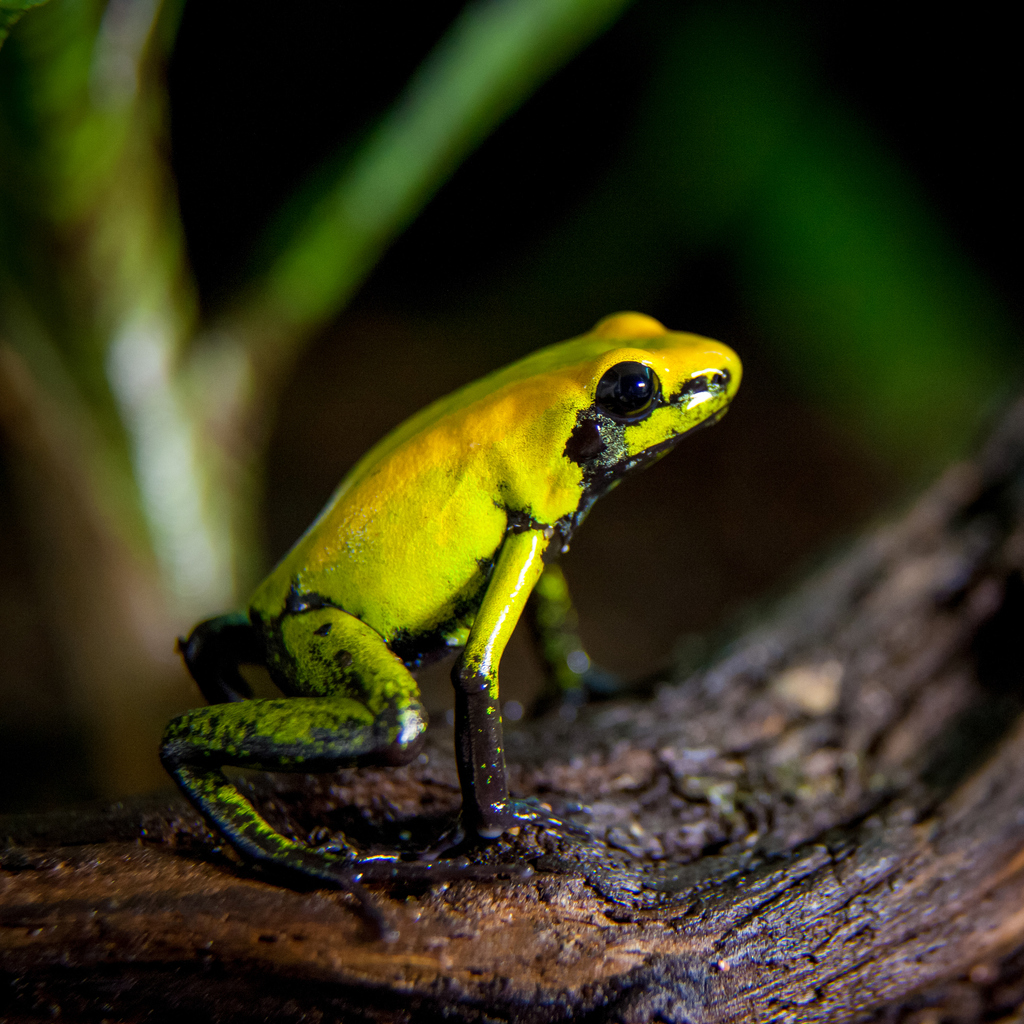If you were asked, what has 4 legs, hops around and goes “ribbit”, you’d probably either say a frog or a toad.
They’re both remarkably similar amphibians both in appearance and due to their shared unique characteristics, such as developing from tadpoles.
So, what exactly makes them different? In this blog, we’re going to explore the similarities and differences between frogs and toads so that you can impress your friends and family the next time you see one hopping around.
Frogs vs. toads: Appearance
On a basic level, frogs and toads are pretty similar-looking animals with 4 legs, large eyes, and a round body. But there are a few easy-to-spot differences.
Firstly, frogs tend to come in a wider range of colours. Although frogs can have dull, muted colours such as grey or brown, they can also be incredibly brightly coloured such as the Black-Legged Poison Dart Frog.

As well as their frog’s skin being brightly coloured, it’s also moist and slimy, unlike a toad’s which is dry and bumpy, helping them retain water so they can live in dryer climates.
Other key differences include a frog’s longer legs that allow it to jump further than toads who primarily prefer to walk or crawl.
What do frogs and toads eat?
Despite being quite different animals, frogs and toads eat pretty much the same thing. Their diets usually include things like small insects, worms, and snails.
Despite only feasting on small snack-sized meals, frogs and toads only tend to eat as little as 2 or 3 times a week. Both frogs and toads require frequent exercise even though they’re not eating very much, which is why they live in quite large spaces.
Typical habitat for frogs and toads
This is where frogs and toads differ the most and are the easiest to differentiate.
Frogs, known for their slimy, wet-looking skin like to make a home around lakes, ponds, or rivers so that they can maintain their moist skin. Remarkably, frogs breathe through their skin, so a moist skin barrier aids in that process.
On the other hand, toads tend to live in dryer areas, meaning that dry skin is advantageous to them. Toads can still breathe through their skin when they’re in water.
Knowing the habitats that frogs and toads tend to live in can help you to differentiate between the two if you spot them in the wild, as well as their different colours and skin types.
Are frogs and toads poisonous?
Most frogs that you come across are not poisonous unless you live in a tropical rainforest. Toxic frogs will signpost themselves with bright colours that are meant to tell predators, “I’m toxic, don’t eat me”.
Toads, however, are always poisonous if you eat them due to a toxic substance that comes out of their skin and parotid glands (where their saliva comes from).

In some cuisines, it’s popular to eat frogs, but only certain species are suitable for this. In France, this tends to be the European common brown frog.
See a range of frogs and toads at Deep Sea World
At Deep Sea World, we love frogs and toads so much that we decided to make a whole exhibition around them!
Temple of Frogs is packed full of frog species, such as the Borneo-eared tree frogs, white’s tree frogs, and the black-legged poison dart frog!
This exhibit is separated into 5 individual tanks that expertly mimic the natural environments that these animals are comfortable in. You can expect a humid, tropical climate in this exhibit, so be sure to wear layers you can take off!
If you’d like to experience the wonder of the Temple of Frogs, be sure to book your tickets in advance and head over to Deep Sea World for a guaranteed fun-filled day out.
